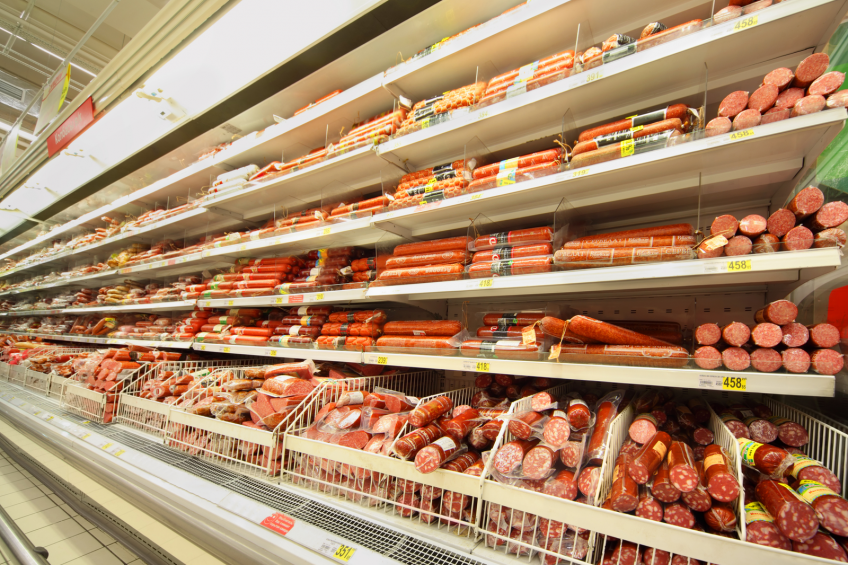Self-sufficiency out of sight as Russia recalculates

The year 2021 is Russia’s target for becoming self-sufficient. From the outset this was an ambitious figure, but now reality has kicked in and brought with it extra obstacles, it seems the years that follow 2021 are a more likely target.
By Vladislav Vorotnikov and Vincent ter Beek
It must have been 20 years ago that Russia’s pork market has shown such strong price fluctuations as it has in recent years. Between September 2012 and May 2013 pork prices have declined by 40%. This was followed by an increase of 30% by the autumn of 2013; the level was ‘only’ 10% lower than one year earlier.
Much of this volatility is related to Russia’s accession to the World Trade Organization (WTO) in August of 2012. As a result of the accession, Russia reduced its tariffs on pork imports. Russian customs have decided on a quota of 400,000 tonnes of pork imports per year – with tax tariffs depending on whether or not the imports are ‘inside the quota’. If so, a low tariff is applied – this used to be 15% and was lowered to 0%. Tariffs on pork imports ‘outside the quota’, however, were taxed heavily – these used to be 75% and have been reduced to 65%.
Effects of the additional supply of pork on the Russian market were deeply felt as profitability vanished. In the first half year of 2013 for instance, Russia’s largest pork producer Miratorg saw its profits drop by 34%. A reaction followed to get prices back onto par: Further damage was avoided through veterinary, sanitary and policy restraints.
In December 2012, the Russian veterinary service Rosselkhoznadzor imposed restrictions when imported pork from eg. the US and Canada and some Latin American countries appeared to contain ractopamine. In addition, limitations are upheld with regard to pork from Europe for reasons of eg. Classical Swine Fever in the Baltic States. On top of that, the tariff policy was changed in April 2013. The Eurasian Economic Commission – the head body of the Custom Union that includes Russia, Belarus and Kazakhstan – temporarily excluded pork from the list of goods to which tariff preferences apply.
Temporary
A return to profitability followed these restraints, but these may only last as long as imports are restricted, experts from Russia’s National Pig Producers’ Union (NPPU) say. With a lifting of all import restrictions, foreign pork will take half the market share, causing the Russian pig industry to collapse. As such, the WTO accession made painfully clear that despite considerable investments over the last years, the Russian pig industry is still uncompetitive.
The major problem for Russia’s pig industry is related to its weak feed industry. Grain resources are usually inefficiently used and the industry producing other ingredients is generally poorly developed. About 70% of all feed proteins need to be imported, so price fluctuations on the global market determine the fate of Russia’s pork industry.
This situation is unlikely to change in the short term, as no major plans are scheduled to step up Russia’s feed protein production. Growing more soybeans proves difficult in Russia, as it cannot expand its acreage soybean production due to agro-climatic factors. Professional cultivation of genetically modified crops remains illegal. And Russia does not have plants for the production of meat-and-bone meal or fishmeal – nor are any planned.
The lack of pig processing capacities has long been another problem. In recent years, however, this problem has been solved by new investment projects. A common problem, however, is the vast distances between processing complexes and pig farms, leading to high transportation costs.
Against this background it becomes clear that the WTO accession is impeding another major programme: Russia’s aim to become self-sufficient with regard to pork production by 2021. NPPU experts have forecasted that it is unlikely that the country will be able to meet domestic demand for pork in 2021. Even more unlikely is the long-term programme goal to become a net exporter of pork by 2020/21.
With these figures in mind, the Russian Ministry of Agriculture issued a second, so-called ‘moderate’ forecast. This includes factors as Russia’s accession to the WTO as well as the impact of the on-going African Swine Fever outbreaks. In this projection, Russia reaches a level of 3.96 million tonnes of pork produced per year – insufficient to attain self-sufficiency. In this case the self-sufficiency will be delayed for two to three years, depending on growth figures by that year.
All this does not mean that things are going bad for Russia’s pig industry though. More growth is projected, and rapidly too. One only has to look at recent pig production investments to see that this hasn’t come to a standstill. Projects will be underway in the next three to four years, adding a total capacity of 700-800,000 tonnes of pork per year.
Source: Pig Progress magazine Vol 29 nr 9, 2013











